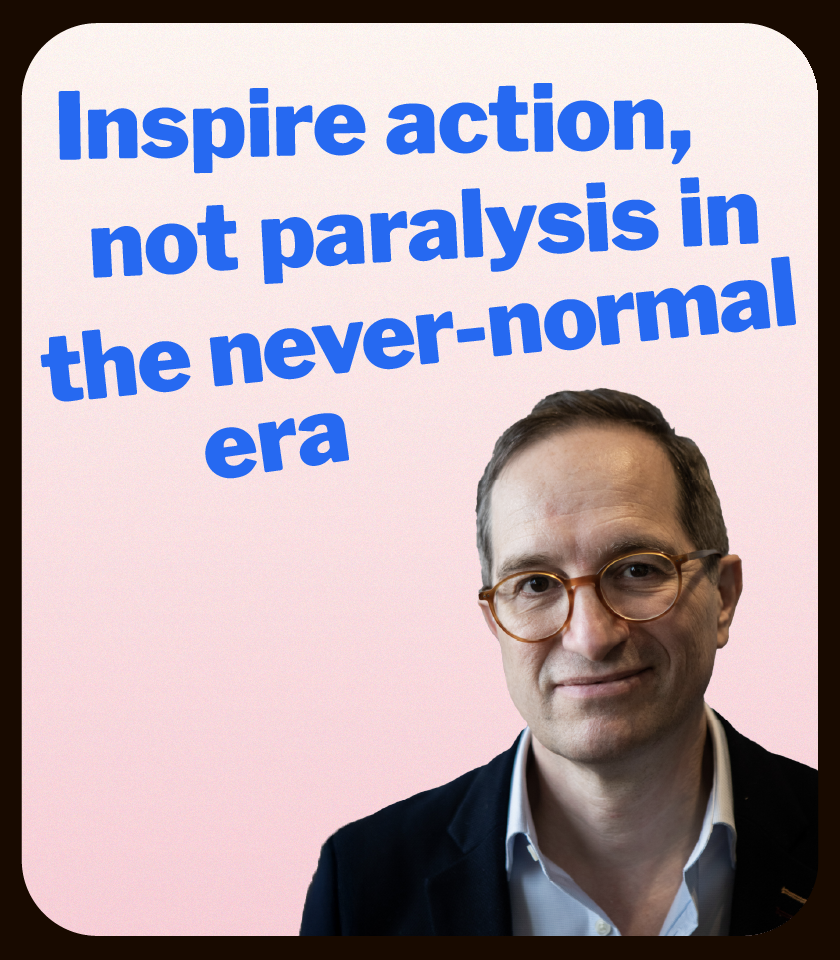“All human beings have three lives: public, private, and secret.”
This quote by Gabriel Garcia Marquez, sprawled across the entire width of a slide in a presentation deck at a previous gig in a past life, still speaks to me. What it expresses so succinctly is the essence of why people-curious brand building is so fascinating. When it’s approached with a genuine sense of wonder about the humans a brand serves, research gives us a glimpse into their worlds. (And, spoiler alert: They don’t orbit around your product or category.) This gives us a far better shot at discovering secrets: counterintuitive insights that change our understanding of people, and what they need.
But, insights are only as good as what you do with them. Good researchers who swim upstream in the murky waters of whos and whys to find that elusive pearl of an insight, often have to cross their fingers that marketers downstream will empathize with the tension and be moved to create solutions that resolve or address it. And, as Anais Nin said: “We don’t see things as they are, we see them as we are.” Our individual lived experiences shape what we see, and what we feel compelled to do. To me, insights reveal meaning, and our singular perspective on them inspires magic.
So, how does one find meaningful counterintuitive insights that inspire breakthrough creative? While there is no one way to guarantee it, here’s a shortlist of ways to improve your chances.
1. Observe, don’t ask.
This sounds simple, but it’s not easy. While asking questions to solicit answers might seem like the entire point of doing research, it only uncovers functionally salient verbatims, out of context. Instead, hold your questions, and make note of the nuances in the conversation, and in the context.
For example: While doing research with camping enthusiasts for a portable lights brand, our team observed how the palpable energy on a campsite fluctuates throughout the day. After all the adventures that daylight brings, the noisy hustle around the campsite begins a slow decrescendo when the sun goes down. Loud music, laughter, and games make way for listening, relating, and connecting. And, in this moment, campers prefer the soft, warm glow of the flickering campfire — people gather closer around it, and conversations get more personal and self-reflective. This is what campers were really looking for, what they were secretly hoping their new gear would help them find.
Experiencing this insight firsthand provided the team with a springwell of inspiration for everything from new product development, packaging redesign, and marketing communications for the brand, in a way that resonated with camping enthusiasts newly adopting this activity.
2. Call in the experts.
And, know that there are all kinds. Bartenders. Dry cleaners. Farmers. Tattoo artists. All of them have front-row seats to a specific and niche human experience and an inimitable perspective from their vantage point. Lean into their unconventional expertise.
For example: In our quest to understand what makes people take better care of themselves, we talked to personal trainers and nutrition experts. They told us that the most common change that compelled people to sign up was a feeling of physical discomfort while completing a task they had comfortably performed many times before. Like needing to catch your breath after going up a flight of stairs. Conversations like these helped us identify early yet invisible inflection points, and amplify the mnemonics of the moment when someone notices them for the first time.
This year, when Curiosity partnered with Ad Council and NHTSA on their “Buzzed Driving Prevention” campaign, we employed a similar methodology. To deliver on the insight that our target would reconsider driving buzzed if it put their loved ones at risk, we set out to create a powerful and subconscious mnemonic to trigger memories with their nearest and dearest. The result? Emotional, sound-driven vignettes designed to convince our target that driving buzzed isn’t worth risking injury, loss, or hurting the ones you love.
3. Look at the fringe.
Conversations with people who have nothing to do with the category often illuminate insights that have yet to be explored. New behaviors are often being born, and taking shape in the margins. Including “the wrong respondents'' in the sample allows you to observe the conditions in which these new norms are being formed.
For example: To learn more about new habit formation, our team talked to college fraternities. We realized that the pomp and circumstance, and at times, the intentional friction inherent in initiation rituals drew attention to the liminal threshold. This often led to a stronger allegiance to the group and their cause. In other words, the harder it is (at times, intentionally) to get into desired cliques, the more you want it, and once in, the more likely you are to stick to it, and the more loyal you are to it. This encouraged us to ask ourselves: what might it look like to introduce intentional friction in the behavior of filtering water, that would inspire people to engage with the ritual more attentively, and consequently, more consistently?
The answer to those questions inspired the idea of engaging rituals, which became the spark to reimagine key experience touchpoints like subscriptions, loyalty programs, and fresh marketing activations for the brand.
I am sure there are many other rules of thumb that seasoned strategists swear by. My list is by no means exhaustive. But it gives me a good starting point, and often a head start, to finding insights that flip my current understanding of the problem and the people who experience it. Articulated evocatively, these insights have the potential, not only to inspire a new kind of creative thinking and problem-solving but also to evoke new behaviors and outcomes for the people that our brands serve.
I hope you find these 3 simple tips useful in your endeavor to bring more meaning and magic to the marketplace. Good luck.



.png)



